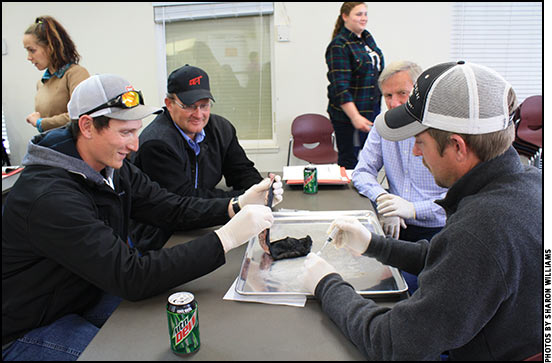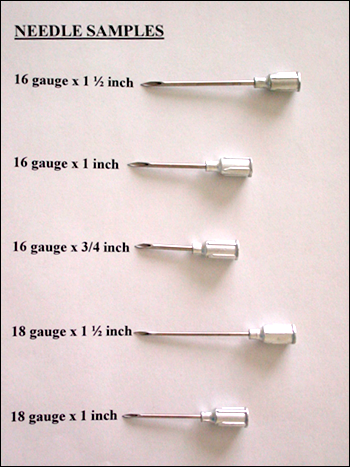
Injection Pointers
Proper injections reduce residues, lesions and risks.
Injections — vaccines, antibiotics, medications to help reduce inflammation, injectable vitamins or minerals, etc. — should always be administered properly to minimize residues and injection-site lesions, and to reduce risks for reactions and side effects.
Shannon Williams, Lemhi County Extension educator in Salmon, Idaho, says it’s important to read labels. Vaccine companies sometimes update their labels. Dosage or injection sites may change. Something that was given intramuscularly (IM) or with an option for IM or subcutaneous (SubQ) injection may now be labeled for subcutaneous only.
Producers must use vaccines and antibiotics properly because of our commitment to consumers to provide a safe product.
“You need a working relationship with your vet to ask questions or get advice on vaccination issues. Your vet is up-to-date on the latest vaccines and antibiotics. You might want to change to a different vaccine that has fewer reactions or produces less irritation at the injection site,” she says. “When giving boosters, make sure they are the same type or brand as the original vaccination. Don’t mix vaccines together unless this use is on the label.”
 Williams suggests changing needles after every 10 animals.
Williams suggests changing needles after every 10 animals.
“You could change needles every time you refill the syringe if it’s a 20-cc syringe and a 2-cc dose,” she offers. Otherwise, you’ll need an alternative way to count the number of head processed and signal a needle change. The main thing is to realize the importance of changing needles.
“At one of our cowboy schools I gave a demonstration for ranchers using a piece of neck hide from a local butcher,” Williams shares. “I gave the ranchers needles and had them ‘inject’ through that hide and rank the amount of force (on a score of 1 to 4) needed to inject that ‘cow.’”
The ranchers could feel the difference. A sharp new needle took a lot less force to penetrate the hide than a needle that had already been used a few times.
Williams also showed photos taken at Iowa State University, looking at needles under a high-powered microscope. These showed a new, sharp needle before use and what it looked like after one use, two uses, up through 16 uses. They could see how dull the needle became and how much dirt and debris it collected.
If you inject through a not-so-clean hide, or the needle bends or gets blunted by accidental contact with the chute, change needles immediately. It doesn’t take much to put a burr on the end of the needle. Some burrs are so tiny you can’t see them with the naked eye. One way to check if it’s still sharp is to run the backside of the needle across the back of your hand. If you feel anything at all, it has a burr on that tip.
If cattle are dirty or the neck is covered with manure, move to the other side. If the animal is dirty on both sides, wash the area and dry it as best you can. If that’s not possible, inject into a cleaner area under the loose hide over the ribs behind the elbow.
“There has been discussion about injecting behind the elbow, especially on small calves where you don’t want to make their neck sore. This is not a BQA (Beef Quality Assurance) injection site at this point, but if I had to make a choice in a bad situation, I might use that area,” Williams says. “Another option is clean the dirty neck as best you can, go ahead and inject that animal and then change needles.”
Select the proper-length needle for IM injections vs. SubQ. This may vary depending on technique. When tenting the skin to slip the needle under, use a longer needle than for a syringe gun you aim at an angle into the hide, Williams says. Use a larger diameter for thick fluid that won’t go through a smaller needle. A larger diameter (no smaller than 16 gauge) is preferred for mature cattle with thick hides because they are less apt to bend or break the needle. Use a smaller needle (18 gauge) for calves with thinner skin.
“Make sure cattle are adequately restrained and secured before giving injections, or there’s more chance of missed doses, bending a needle, creating more tissue damage if the animal moves, or putting an injection into the wrong location,” says Williams.
Editor’s Note: Heather Smith Thomas is a cattlewoman and freelance writer from Salmon, Idaho.







